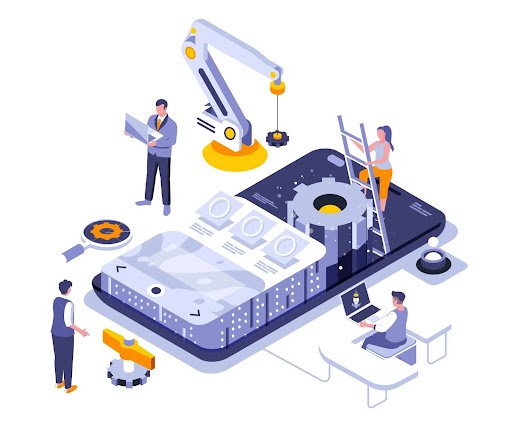Introduction
The world of Android app development is rapidly evolving. As technology advances and user expectations grow, creating high-performance Android apps has become more challenging yet crucial. In 2025, users demand seamless experiences, quick load times, and battery-efficient apps that fit their fast-paced lives. For businesses and developers alike, staying competitive means mastering the art of high-performance Android app development.
This article delves into the core principles and strategies to ensure your Android app not only meets but exceeds performance standards. Whether you’re part of an Android app development agency or looking to hire Android app developers, these insights will help you stay ahead.
Why High Performance Matters
In an era dominated by mobile usage, app performance directly impacts user retention, ratings, and overall success. Research shows that:
- 53% of users abandon apps if they take longer than three seconds to load.
- High-performing apps are more likely to be recommended, boosting visibility organically.
The stakes are clear: prioritizing performance is essential for long-term growth.
2. Core Pillars of High-Performance Android Apps
2.1. Architecture and Design
Clean Architecture A clean architecture simplifies development and maintenance. By separating concerns into layers—such as data, domain, and presentation—you ensure scalability and testability. Use design patterns like MVVM (Model-View-ViewModel) or MVI (Model-View-Intent) for better state management.
Dependency Injection Leverage tools like Hilt or Dagger for dependency injection. This practice reduces coupling, improves testability, and ensures efficient resource allocation.
Asynchronous Programming Asynchronous programming is vital for tasks like network calls or database operations. Kotlin Coroutines allow you to write asynchronous code in a structured and readable way, improving both performance and developer productivity.
2.2. Performance Optimization Techniques
Profiling and Debugging Use Android Studio’s profiling tools to monitor CPU, memory, and network usage. Identify bottlenecks and optimize critical areas.
Efficient Layout Design Minimize layout complexity by:
- Using ConstraintLayout to reduce nested views.
- Employing view stubs or include tags to reuse layouts and reduce rendering time.
Image Optimization Large image files can slow down apps. Optimize images by:
- Compressing and resizing assets for different screen densities.
- Using efficient image loading libraries like Glide or Coil.
Memory Management Avoid memory leaks by:
- Using weak references where appropriate.
- Recycling bitmaps and using bitmap pools.
Network Optimization Implement caching and data compression to reduce network requests. Use libraries like Retrofit and OkHttp for efficient API interactions.
2.3. User Interface (UI) Responsiveness
Smooth Scrolling Optimize RecyclerView and use paging to load data incrementally, ensuring smooth scrolling.
Animations Keep animations fluid by using the MotionLayout API or leveraging Jetpack Compose’s animation tools.
Touch Response Reduce touch latency by handling input events efficiently and avoiding heavy computations on the main thread.
3. Modern Development Practices
3.1. Kotlin Coroutines
Kotlin Coroutines provide a modern approach to asynchronous programming. They help:
- Simplify complex operations with structured concurrency.
- Reduce memory overhead compared to traditional threading models.
Example: Use coroutines to fetch data from an API in the background while keeping the UI thread responsive.
3.2. Jetpack Compose

Jetpack Compose revolutionizes UI development with:
- Declarative Syntax: Simplifies UI creation and updates.
- Performance Optimization: Automatically optimizes rendering and reduces overdraw.
By adopting Jetpack Compose, developers can create modern, fluid, and high-performing UIs faster.
3.3. Continuous Integration and Continuous Delivery (CI/CD)
CI/CD pipelines ensure rapid and reliable app releases. Tools like Jenkins, CircleCI, or GitHub Actions can:
- Automate testing, building, and deployment processes.
- Ensure consistent code quality and faster time-to-market.
4. Testing and Quality Assurance
Unit Tests
Unit tests validate individual components of your app, ensuring their functionality. Use frameworks like JUnit or Mockito for robust testing.
UI Tests
Automated UI tests simulate user interactions to verify app behavior. Espresso is a powerful tool for writing reliable UI tests.
Performance Testing
Identify and resolve performance issues early with tools like Firebase Performance Monitoring or Android Profiler.
Conclusion
Key Takeaways
Creating a high-performance Android app in 2025 requires a combination of technical expertise, modern tools, and best practices:
- Adopt clean architecture and efficient coding standards.
- Prioritize performance optimization techniques like profiling, memory management, and network efficiency.
- Leverage Kotlin Coroutines and Jetpack Compose for streamlined development.
- Implement robust testing and CI/CD pipelines to ensure quality.
Future Trends
The future of Android app performance lies in:
- Enhanced AI and machine learning integration.
- Advanced tools for real-time profiling and debugging.
- Continued evolution of Jetpack Compose and Kotlin.
Continuous Learning
Whether you’re part of an Android app development agency or looking to hire Android app developers, staying updated with the latest trends and technologies is vital. Continuous learning and adaptation are the true secrets to success in high-performance Android app development.
By focusing on these strategies and embracing innovation, you can build apps that are not only fast and efficient but also beloved by users.
Additional Insights for Building Smooth and Fluid Android Apps
Adopting AI for Smarter Development
Artificial intelligence (AI) tools can help developers optimize performance by predicting user behavior, managing resources, and identifying bottlenecks. AI-powered analytics can highlight areas for improvement, making it easier to refine app performance.
Advanced Profiling Tools
Modern profiling tools offer deeper insights into app behavior. For instance:
- LeakCanary: Helps detect and fix memory leaks.
- Network Profiler: Monitors API calls and network usage to pinpoint inefficiencies.
Collaborating with Users for Feedback
User feedback is invaluable for identifying performance gaps. Establish a robust feedback loop to continuously improve your app based on real-world usage.
Energy-Efficient Development Practices
Incorporating energy-efficient practices not only enhances app performance but also improves user satisfaction. Focus on:
- Reducing background tasks.
- Optimizing location services.
- Efficiently managing wake locks and alarms.
By integrating these advanced techniques and prioritizing user needs, you can ensure your Android app thrives in 2025 and beyond.



